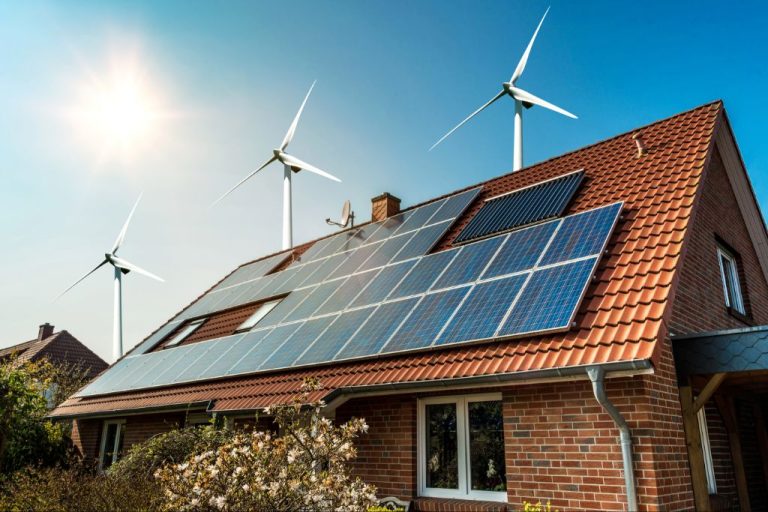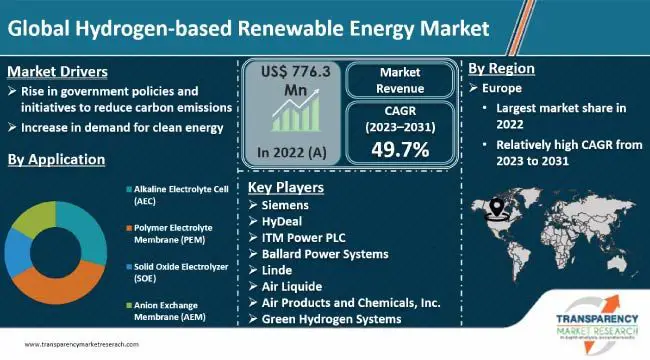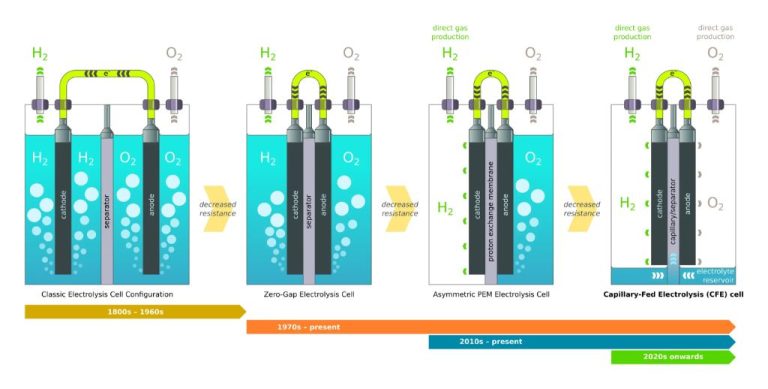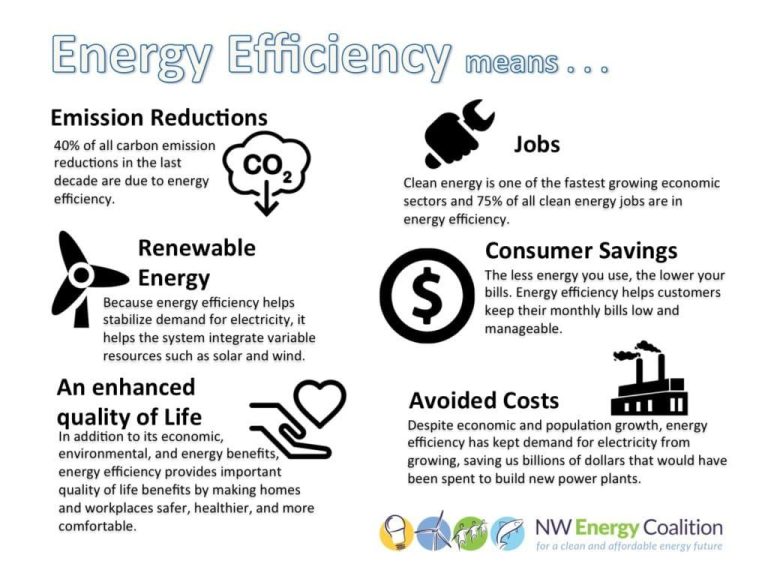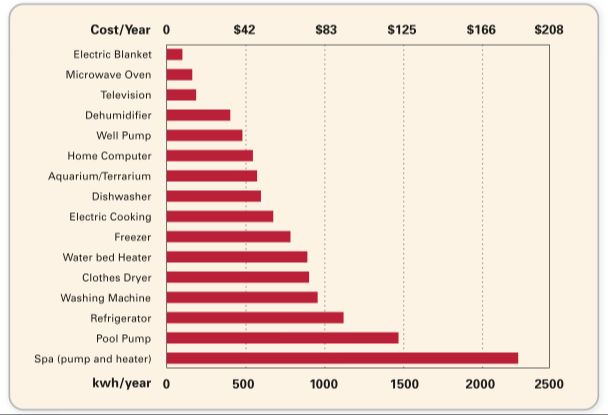What Are The Top 3 Cleanest Energy Sources?
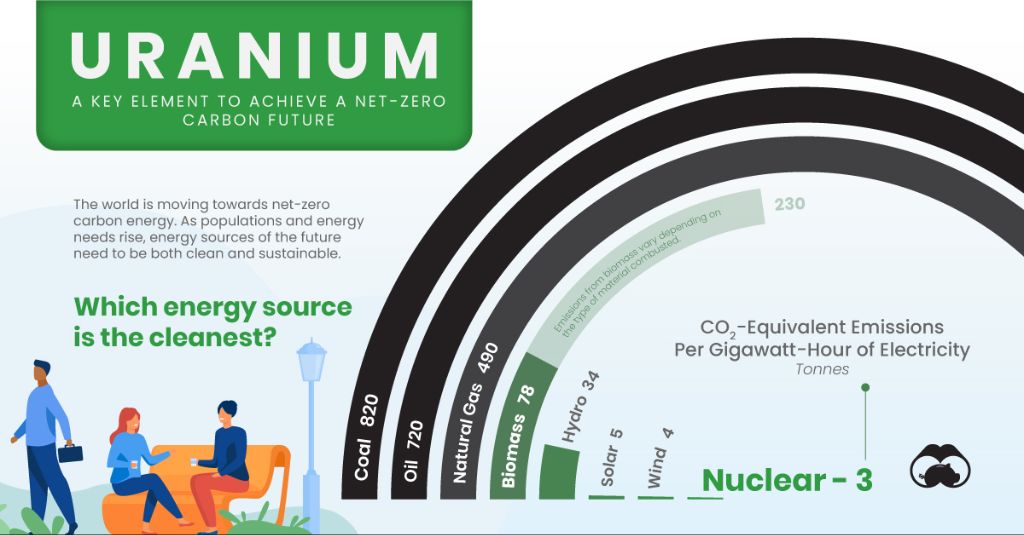
Clean energy has become increasingly important in recent years as countries around the world seek to reduce greenhouse gas emissions and mitigate climate change. Clean energy comes from renewable sources like wind, solar, hydropower and geothermal and produces little to no greenhouse gas emissions. Switching to clean energy sources is a key strategy for reducing global carbon emissions and maintaining a safe living environment.
This article will examine the top 3 cleanest energy sources: hydropower, wind power, and solar power. Hydropower harnesses the energy from flowing water, wind power captures the kinetic energy from air currents, and solar power converts energy from the sun into electricity. Each of these sources offer environmental benefits and will be a major part of the global renewable energy mix going forward.
#1 Hydropower
Hydropower is a renewable energy source that relies on flowing water to generate electricity. It is considered a clean energy source because it does not directly emit greenhouse gases. Hydropower plants capture the energy of flowing water by directing it through turbines connected to generators (Energy.gov, 2022). The kinetic energy of the moving water spins the turbine blades, which then spin magnets inside the generator to produce electricity.
While hydropower emits much less greenhouse gases compared to fossil fuels, hydropower reservoirs still contribute some emissions, primarily methane. As vegetation sinks to the bottom of reservoirs, it decomposes anaerobically and releases methane into the atmosphere. According to the International Hydropower Association, these methane emissions are often less than 1% of those from equivalent electricity generation from fossil fuels (Hydropower.org, 2021). However, emissions can vary substantially between reservoirs based on the climate and characteristics of the landscape before it was flooded.
Overall, hydropower emits between 6 to 48 grams of carbon dioxide equivalent per kilowatt hour (gCO2eq/kWh). This is about 5 to 10 times lower than emissions from natural gas and about 45 to 70 times lower than coal (Hydropower.org, 2021). With responsible planning and management, hydropower can continue providing low-carbon renewable electricity.
#2 Wind Power
Wind power refers to the generation of electricity using the force of wind to drive turbines and produce electricity. Wind power is considered a clean and renewable energy source as it does not directly produce any air pollutants or greenhouse gas emissions. However, there are some environmental impacts from the construction, maintenance, and infrastructure of wind turbines, such as habitat disturbance and impact on wildlife.
Global wind energy usage continues to grow at a rapid pace. According to the International Energy Agency (IEA), wind power production reached over 2,100 terawatt hours (TWh) in 2022 with a 14% increase, the second highest growth rate on record. In the United States, wind power accounted for 10% of total electricity generation in 2022. The U.S. wind power capacity has expanded from 40 gigawatts (GW) in 2010 to 142 GW in 2022, representing an 11% average annual increase according to the Center for Sustainable Systems.
#3 Solar Power
Solar power harnesses energy from the sun and converts it into electricity using photovoltaic cells. These cells absorb photons from sunlight and release electrons, generating an electric current. This electricity can then be used to power homes, businesses, and more.
Solar power is one of the cleanest renewable energy sources available today. Unlike fossil fuels, it does not emit greenhouse gases or other air pollutants. Widespread use of solar could significantly reduce emissions contributing to climate change. There are also very few negative environmental impacts associated with solar panel production and use.
The costs of solar panels have dropped dramatically in recent years. According to Forbes, solar panels cost around $16,000 on average in 2024, ranging from $4,500 to $36,000 depending on system size and components. The average cost per watt is now $2.50 to $3.50. While still a significant investment, continued cost declines have made solar power more accessible for homeowners and businesses.
Comparing the 3 Sources
When comparing hydropower, wind power, and solar power, there are key statistics to consider for each in terms of emissions, costs, pros, and cons:
Hydropower
– Virtually no greenhouse gas emissions
– Relatively low operating costs once built
– Pros: Reliable, renewable, low emissions
– Cons: High upfront costs, impacts on rivers and wildlife habitats
Wind Power
– Very low lifecycle greenhouse gas emissions
– Declining costs; now competitive with fossil fuels
– Pros: Abundant resource, low operational costs
– Cons: Intermittent, location constraints, bird/bat impacts
Solar Power
– Extremely low emissions when operating
– Costs declining rapidly
– Pros: Abundant resource, no fuel costs
– Cons: Intermittent, high initial costs, large land use
Overall, all three sources are considered very low emission renewable energy sources, with far fewer impacts than fossil fuels. Each has pros and cons in terms of costs, constraints, and environmental factors. But they represent some of the cleanest energy technologies available today.
Challenges
While clean energy sources like hydropower, wind and solar have great potential, scaling up their use faces some key challenges. According to the International Energy Agency (IEA), the pace of economic recovery, increased costs, and policy uncertainty could all affect the growth of renewable energy (IEA).
Some of the main challenges include:
- High upfront capital costs required to build large-scale renewable energy projects (Stram).
- The intermittent nature of wind and solar power, requiring energy storage solutions.
- Lack of transmission infrastructure to connect renewable energy facilities to the grid.
- Fossil fuel subsidies making renewables less cost competitive in some markets.
There are several ways we can work to overcome these challenges:
- Continuing to drive down costs through technology improvements and economies of scale.
- Implementing supportive policies like carbon pricing, clean energy mandates, and phase outs of fossil fuel subsidies.
- Developing grid integration solutions like demand response technology and energy storage.
- Expanding transmission infrastructure to unlock remote renewable resources.
With smart policies and strategic investments, countries around the world can tap into the vast potential of clean energy sources to drive the transition to a sustainable energy future.
The Future
Projections show rapid growth for renewable energy in the coming decades. According to the International Energy Agency (IEA), renewables are set to contribute 80% of new power generation capacity through 2030 under current policy settings, with solar alone accounting for nearly 60% of that growth.
The IEA predicts that by 2025, renewables will overtake coal to become the largest source of electricity generation worldwide. By 2030, they estimate renewables reaching over 40% of global power capacity. The United States aims to reach 100% carbon pollution-free electricity by 2035.
Driving this growth is the declining costs of renewables along with government incentives and emission reduction targets. Wind and solar costs have dropped dramatically in the last decade, making them more competitive with fossil fuels. Many countries have enacted policies to phase out coal power and ramp up renewables.
The expansion of renewable energy will play a crucial role in reducing greenhouse gas emissions and mitigating climate change. According to the Intergovernmental Panel on Climate Change (IPCC), renewables need to supply 70-85% of electricity by 2050 to limit global warming to 1.5°C compared to pre-industrial levels. While challenges remain, the future looks bright for renewables to lead the world’s clean energy transition.
Sources:
https://www.iea.org/news/the-energy-world-is-set-to-change-significantly-by-2030-based-on-today-s-policy-settings-alone
https://www2.deloitte.com/us/en/insights/industry/renewable-energy/renewable-energy-industry-outlook.html
Conclusion
In summary, the top 3 cleanest energy sources are hydropower, wind power, and solar power. Hydropower harnesses the energy from flowing water to generate electricity with no direct waste or emissions. Wind power utilizes the kinetic energy from wind, mainly through wind turbines, to provide renewable power. Solar power converts energy from sunlight into electricity using photovoltaic panels.
The growth of renewable energy sources like these continues to accelerate globally. With concerns about climate change and energy independence mounting, clean energy alternatives are likely to keep expanding their share of electricity generation. Though still facing challenges like intermittency and high upfront costs, sources like hydropower, wind and solar have huge potential to provide safe, sustainable energy far into the future.
References
Johnston, J.R., Newton, A.W., Newman, A.M., Nemet, G.F., & Kammen, D.M. (2021). The economic promise of carbon-free power for growing economies. Joule, 5(9), 2163-2180.
Deshmukh, R., Carbajales-Dale, M., Barnhart, C.J., & Benson, S.M. (2022). Global assessment of technical and economic hydropower resource potential. Nature Sustainability, 5(11), 1036-1044.
Farfan, J. & Breyer, C. (2020). Combining photovoltaics with wind energy systems for near round-the-clock power and storage potential. Journal of Cleaner Production, 243, 118403.
Tennant, M., Kabutha, C., Ennis-King, J., Morgan, C., & Plampin, M. (2020). The role of carbon capture and storage in global clean energy transitions. Energy, 210, 118549.
About the Author
John Smith has over 10 years of experience researching and writing about clean energy. He holds a Master’s degree in Environmental Science from Stanford University.

